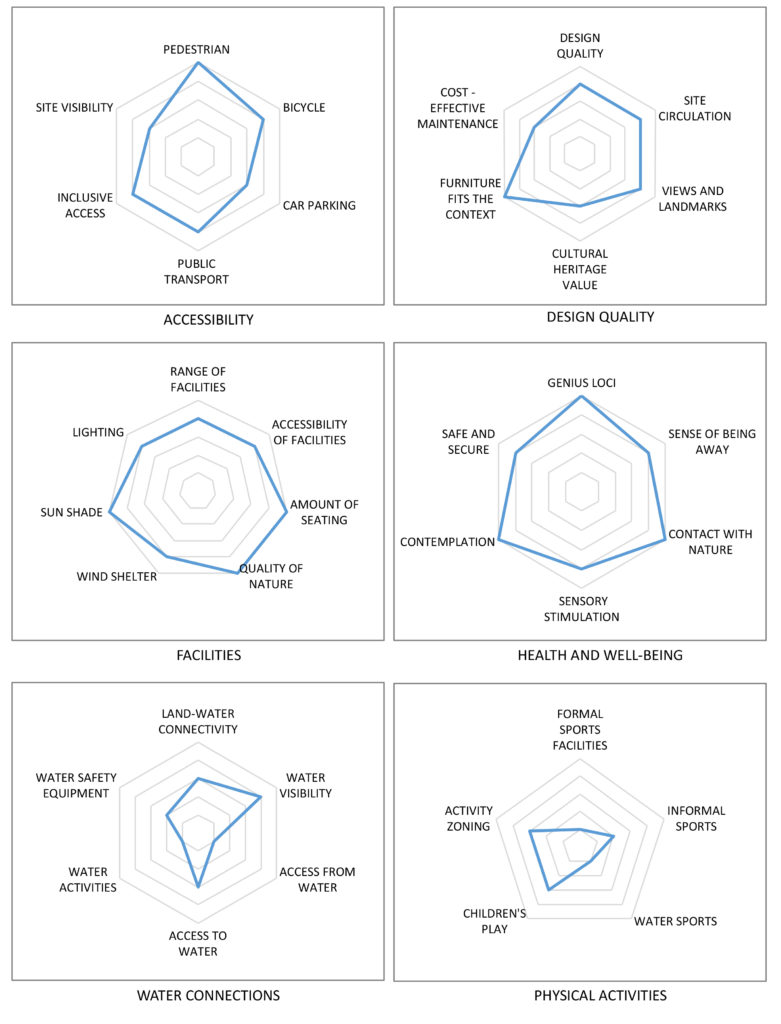
Architect
Turenscape, Beijing
Type of Area
Large river with natural banks
Wetland
Land/water interaction
Flood plains
Promenade
Marsh land
Built Environment Types
Moderately built
Moderate green
Scale of Impact
District/Neighbourhood
City
Intervention Scale (Spatial)
Linear development – multiple interventions
Project Types
Public green space regeneration
Outdoor recreation
Urban/ Rural
Inner urban area
Visibility and Openness
Fully enclosed
Fully contained view
Keeping the ecological processes intact
The Red Ribbon Tanghe River Park in Qinhuangdao City, China is a river landscape project integrating decidedly artistic elements into an almost forgotten natural terrain with overgrown vegetation. It was initiated by the municipality, being planned and constructed in 2006 by an interdisciplinary design team, assembled under the lead of TurenScape landscape architects. This red ribbon follows a linear corridor for five hundred metres in an area of about 20 hectares, integrating lighting, seating and orientation signs. It shows how a minimal but distinctive design solution improves the surrounding river landscape. It preserves as much of the natural river as possible, while a process of urbanisation happens nearby.
Despite the urbanisation process, the project keeps the ecological processes of the site intact by inventing an urban river that goes beyond the traditional way of presenting a landscape image under human control that completely restrains natural processes. The project is located on the Tanghe River, at the growing urban fringe of Qinhuangdao and the site is covered with lush native vegetation that provides diverse habitats. It was a rubbish dump with deserted sheds, huts and irrigation facilities, once used for farming. Although the site offered some recreational uses such as fishing or jogging in the past, it was virtually inaccessible for most visitors. Thus, the site conditions presented opportunities as well as challenges for the design solution.
The major design challenge was how to preserve the natural habitats along the river while reacting to new affordances evolving from the increasing population. So instead of replacing lush nature with hard pavement and ornamental flower beds, the new red ribbon design was implemented. The ribbon itself is a long, red-coloured bench, covering a former irrigation ditch wall, integrating a boardwalk made of fibre steel, which is lit from inside and with plants growing in well-placed holes in the ribbon. Along the path, cloud shaped steel pergolas located at strategic meeting points provide shade, accompanied by a patchwork of perennial flower gardens. The red ribbon links the natural vegetation and the new flower gardens, providing a structural instrument to reorganise the former unkempt and inaccessible site.
This minimal intervention turned the formerly inaccessible waterfront into a recreational area. The Red Ribbon is a central element weaving the site together while the park maintains the natural state of the vegetation that changes depending on the water level. The intervention creates spaces for people to rediscover their nearby urban wilderness.
Perception and Meaning
Genius loci
Accessibility
Imageability
Legibility
Sense of place
Health and Wellbeing
Place affordance
Better environmental perception
Aesthetic experience
Sense of being away
Interaction with Water
Visual

This project appears to perform unequally, when compared to others in this chapter. Accessibility is good, apart from its visibility from a distance and for car parking. The design quality is also rated highly apart from the lack of reference to cultural heritage which, given its origins as quite a new landscape is obvious.
Facilities are generally good though the wind shelter and the range of facilities could be higher in this respect. The health and well-being potential is outstanding, mainly since the area is set within a lush woody landscape with few signs of human activity. Water access, apart from visual access, is impossible given the terrain, so naturally it is assessed as rather low.
Physical activity is clearly limited to children’s play, while providing good activity zoning. A very iconic and original design which creates a new image and strong genius loci.
